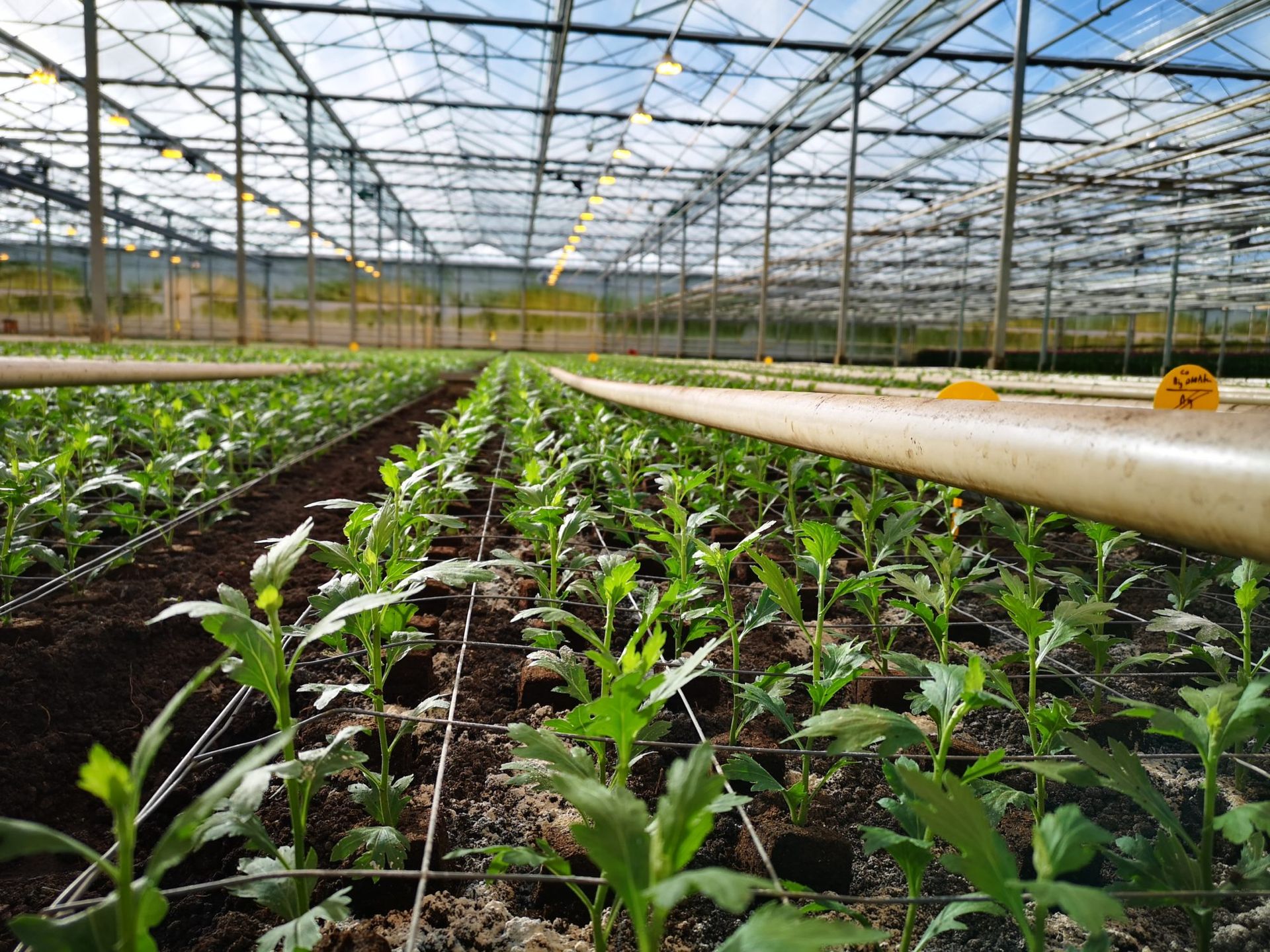

Nutrition plays an important role in this. Knowing which elements are important offers the opportunity to turn the right buttons.
The various plant sap datasets of cut flowers in the winter period show that sodium and chloride are consistently high. Potassium remains well below the target value in these analyses. Potassium is important for leaf quality and shelf life because it is important for cell tension (turgor). In the winter period, potassium absorption is significantly lower than in the summer period due to limited evaporation. Of course, potassium is not the only factor and in this article we also look at the other most important factors.
This article was written based on findings from the winter 2018/2019 and 2019/2020 periods. The next crop is the spray chrysanthemum.
Leaf problems due to unbalanced intake
During the elongation phase of the crop, the primary elements potassium, nitrate, chloride and calcium are necessary. Potassium fills the cells and puts tension on the cell. Nitrate is particularly important for plant growth. Chloride plays an important role in the balance of EC in the cell and cell tension. Calcium is important for strong cell walls, sufficient growth and also specifically for monitoring energy and hormone balance in the plant.
During the winter period, potassium and calcium are insufficiently absorbed during the stretching phase due to limited sap flow and imbalance with other minerals.
In the attached graphs, plant sap measurements have been made over the entire growth period of the crop. During the elongation phase (orange marking), the limited uptake of potassium can be seen in both young leaves (blue line) and old leaves (red line). The orange dotted line is the target value, recording below this line indicates a deficiency.
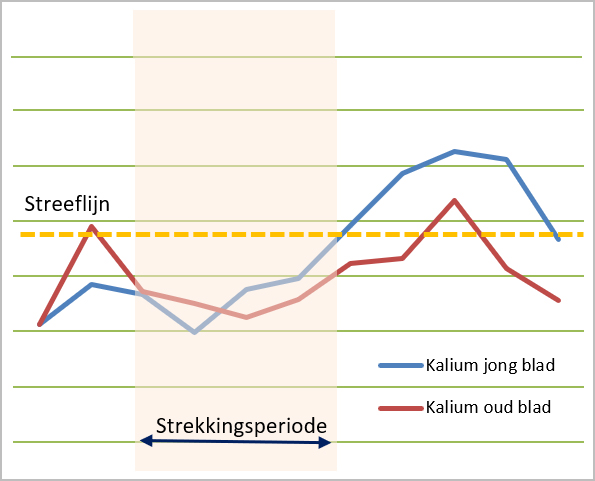
Figure 1, Potassium presence in plant sap
During the same period, the limited absorption of calcium in the young leaves can be seen. Sufficient calcium in the young leaf is essential for the development of strong cell walls and balance in the allocation of assimilates. Sufficient calcium in the new shoots can, for example, prevent hardly any sugars from reaching the root environment.
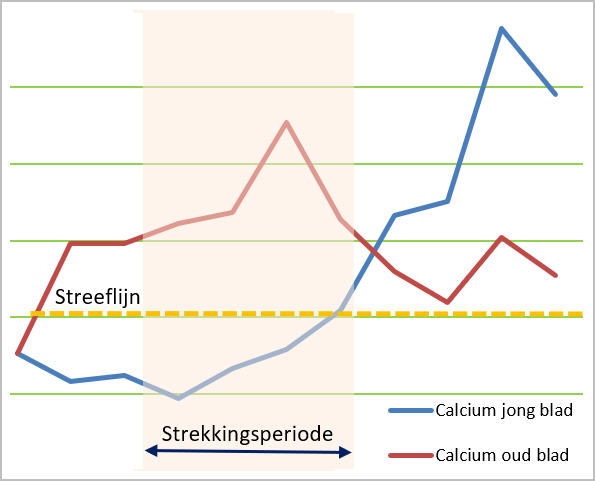
Figure 2, Calcium presence in plant sap
In practice, the EC is increased to increase potassium intake.
To get enough potassium into the plant, increasing the EC is a commonly used method. In practice this has an adverse effect, especially when the presence of chloride in the plant sap is already sufficient. Zekki et al (1996) wrote: “Chlorine is burden which, together with sodium, causes unnecessary increase in ion concentration (EC) in the root area of plants.”
Increasing EC when there is plenty of chloride actually stimulates the absorption of sodium and (even more) chloride in most cases. This is because chloride, together with sodium, disrupts the EC ratio in the root zone. In the summer the plant is less affected by this because sufficient water enters the plant. Sufficient water intake is then beneficial for sufficient potassium absorption.
However, in winter there is limited water absorption, whereby chloride blocks the absorption of potassium through a higher EC in the root environment. Artificially increasing the EC as a correction tool therefore has a (double) opposite effect. It facilitates an even greater effect of sodium and chloride. Where sodium absorption easily occurs 300% above the target value. Potassium uptake appears to lose out and does not enter the plant sufficiently.
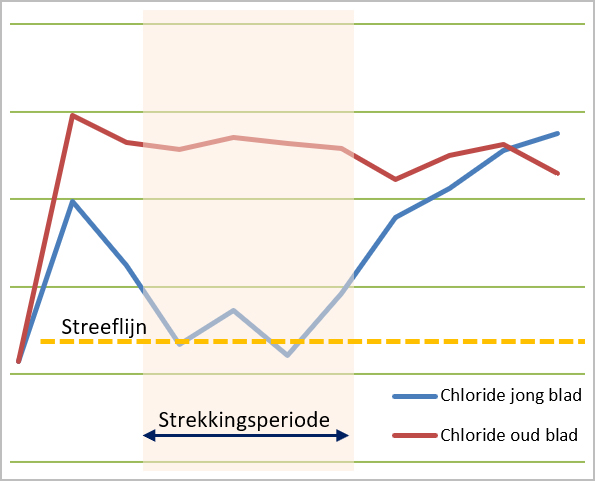
Figure 3, Chloride presence in plant sap
If there is a potassium deficiency during the cell elongation phase, the correction just before maturation has very limited effect. Plant juice analysis shows that potassium is still reasonably close to the target value, but the quality of the plants shows a different picture. This underlines the importance of visual inspection in addition to the plant sap data, especially in the case of such shortages. It also shows that timely adjustments are necessary, as the backlog can hardly be caught up later in the cultivation.
Changing the backlog is certainly difficult when nitrate levels are excessive. Substantial amounts of nitrate are undesirable because it provides water between the cells and makes the sugar movement from the cell to the flour more difficult.
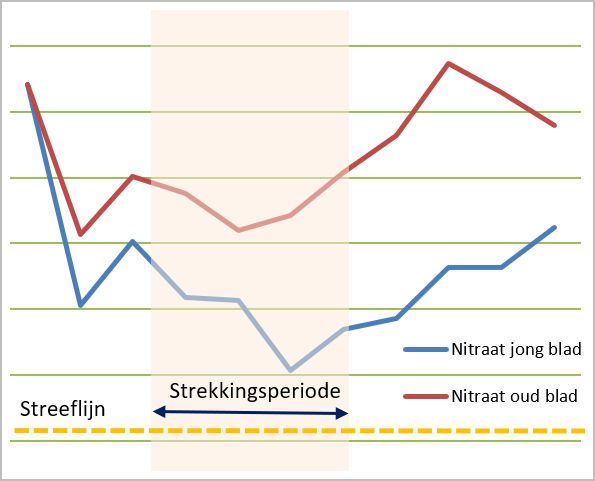
Figure 4, Nitrate presence in plant sap
How can you correct this?
When potassium drops below the level, the quickest method is to adjust via foliar fertilization. Depending on the fertilizer chosen, it is wise to combine this with Fulvic 25 for better absorption through the leaves and faster mobilization in the plant.
If the chloride content in the plant is (too) high in winter, it is wise to use a mono-potassium form for accelerated absorption. After all, potassium chloride and potassium sulphate provide different bulking agents. This makes foliar spraying with monopotassium phosphate (MKP) the quickest solution, because no further conversion is required. In addition, this bypasses the blockage caused by chloride in the root zone. The best application is achieved by combining Fulvic 25 with MKP, Fulvic 25 ensures faster absorption and mobilization of potassium in the plant.
Structural improvement
Ultimately, a long-term solution must be reached. This can be done by monitoring the potassium value in the leaf at the time of the cell elongation phase. A limited supply of potassium in this phase is inherent to quality problems later in the cultivation. Foliar application of potassium fertilizers can then offer a solution. Depending on the soil analysis, a potassium dose in the autumn can support this effect.
Please note, it is important to only carry out potassium sprays during the cell elongation phase. Potassium sprays during the cell division phase (the phase before the elongation phase) can negatively affect cell division. As a result, the plant is not (sufficiently) able to produce new cells and growth problems can arise that only become visible later in the cultivation. Limited height growth can be an example of this.
Questions regarding this article?
please contact us
- Nederlands
- English
- Deutsch
- Francais